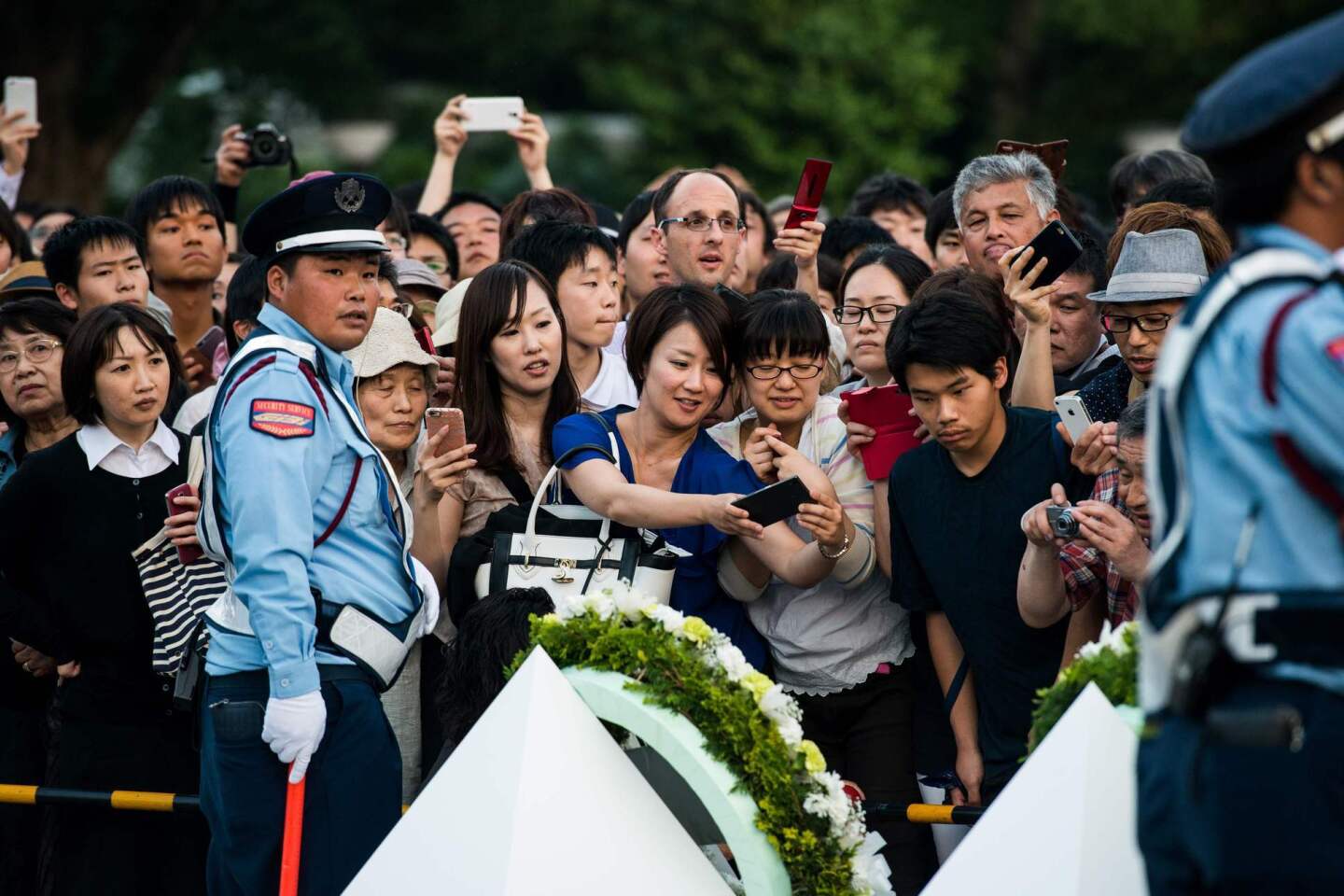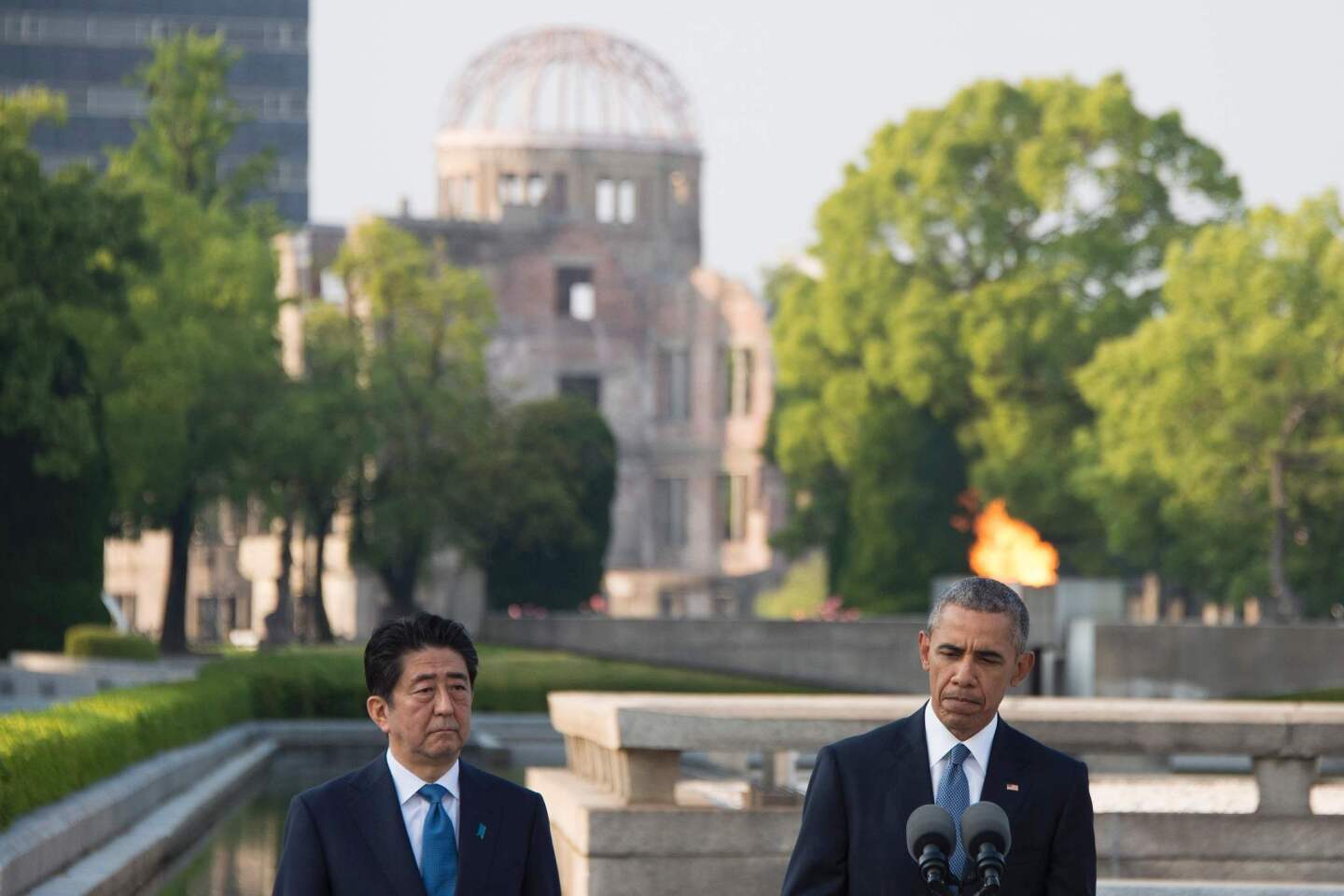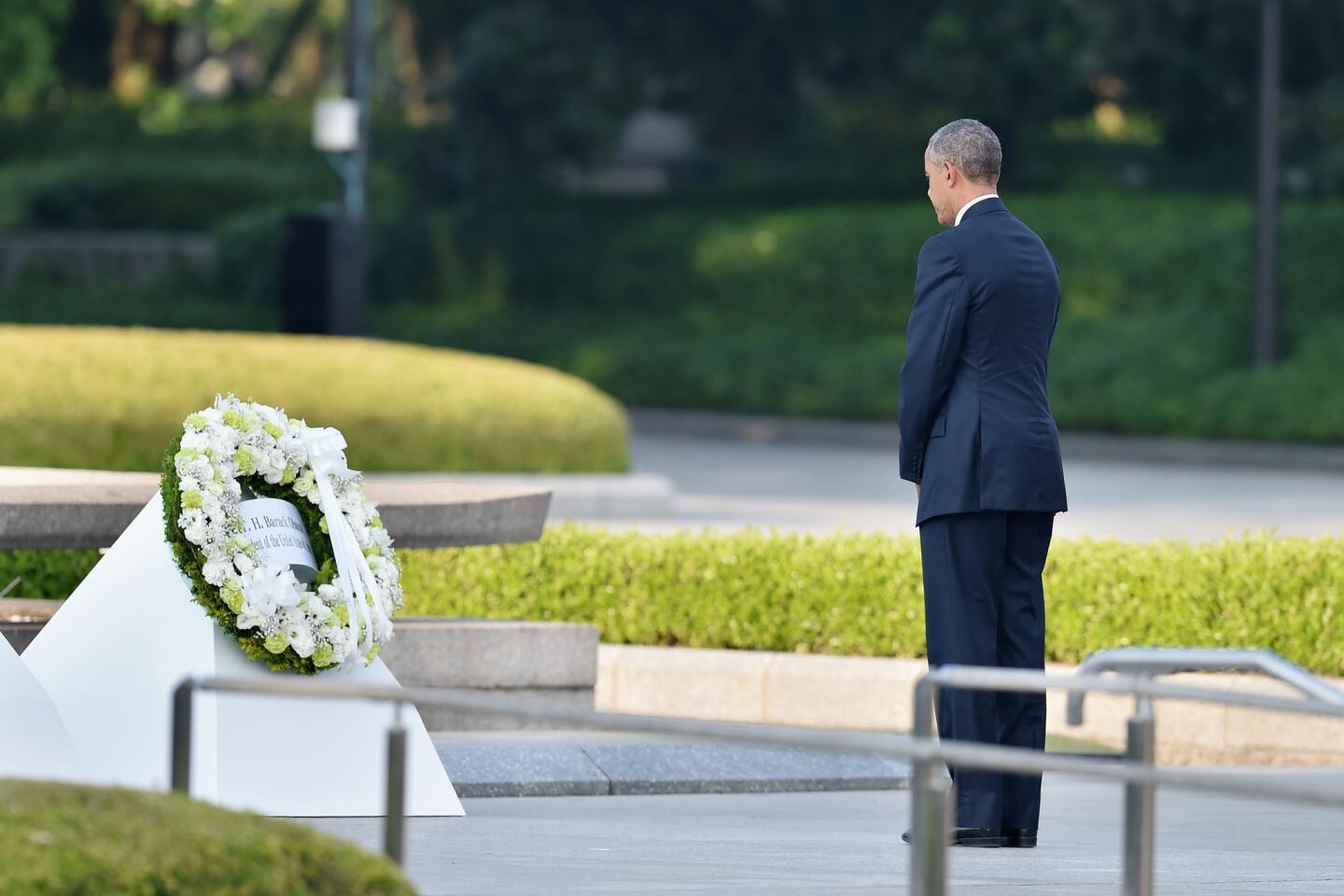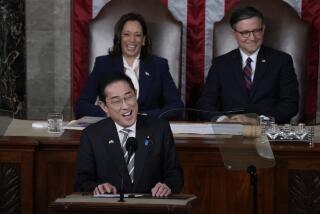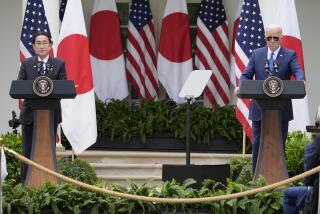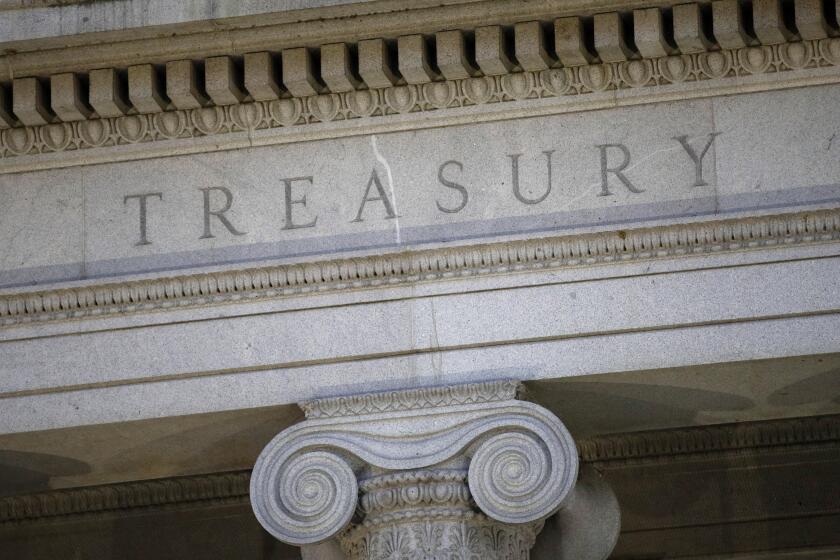In historic visit to Hiroshima, Obama calls on the world to morally evolve

President Obama came face to face with the horror of nuclear war Friday in a somber visit to Hiroshima, becoming the first sitting U.S. president to tour the site of the atomic bombing 71 years ago that killed tens of thousands in an instant and ushered in the nuclear age.
In a sweeping address that reflected on the obligations of humankind, Obama wrestled with the inherent contradiction that centuries of technical advancement have both made it easier to bind people together and given them the capacity for the carnage seen in this city. And he confronted the cold reality that his own goal of a world without nuclear firepower remains frustratingly out of reach.
Speaking slowly and solemnly, a tempo that seemed intended to underline his reach for history, the president noted that as battlefield weapons and tactics evolve, accompanying norms about whether to use them advances only in fits and starts.
“Technological progress without an equivalent progress in human institutions can doom us,” Obama warned. “The scientific revolution that led to the splitting of an atom requires a moral revolution as well. That is why we come to this place.”
See the most-read stories this hour >>
Obama did not apologize for the nuclear attacks here and in the city of Nagasaki, strikes he believes ended the perils of Japanese aggression and brought about the end of World War II.
But, as the leader of the only country ever to have deployed nuclear weapons, Obama said it is the duty of those who hold terrible power to accept the consequences of its use.
“We have a shared responsibility to look directly into the eye of history and ask what we must do differently to curb such suffering again. Someday the voices of the hibakusha will no longer be with us to bear witness,” he said, using the Japanese term for survivors of the nuclear blasts.
The Peace Memorial park he visited Friday afternoon marks the darkest days of Hiroshima, where about 350,000 Japanese civilians and military personnel were living on Aug. 6, 1945, the day the bomb fell.
An estimated 60,000 to 80,000 people were killed instantly and tens of thousands more died from the effects of radiation in the months and years that followed. Among the dead were thousands of junior high school students mobilized to clear fire breaks in preparation for conventional bombings like those that had hit other Japanese cities in the weeks leading up to Aug. 6.
When the Enola Gay deployed the uranium bomb known as Little Boy over the city, though, it unleashed a blast thousands of times more powerful. Though only a fraction of its 110 pounds of fissile material actually underwent fission, its force nevertheless was equal to about 16,000 tons of more typical explosives.
Within a three-quarter-mile radius, virtually everyone died. Glass bottles melted and only a few concrete buildings remained standing.
On Friday, the president spent only a few minutes inside the Hiroshima Peace Memorial Museum, which features disturbing relics of the bombing, including singed and torn clothing worn by students burned in the bombing, and even nails and skin of a junior high school boy that were kept as relics by his mother after he died.
There he viewed a display for Sadako Sasaki, a young girl who survived the bombing and, while battling the leukemia she contracted as a result of radiation exposure, would fold paper cranes, a symbol of longevity in Japan.
A long-held belief among some Japanese is that by folding 1,000 paper cranes, one can achieve long life. Children present wreaths of paper cranes in the park in Hiroshima in Sadako’s memory; Obama gave two of his own to local schoolchildren, and then left two more alongside his inscription in the museum guest book.
“We have known the agony of war. Let us now find the courage, together, to spread peace, and pursue a world without nuclear weapons,” he wrote.
In his address, Obama acknowledged that he would fall short of his goal of nuclear nonproliferation that he set in a speech in Prague in 2009 at the start of his presidency.
Even then, he said he knew it may not be done in his lifetime. But nonetheless, he renewed his call in Hiroshima for a nuclear-free world, this time with the soberness of a president who will end his two terms with the nation still at war.
“We may not realize this goal in my lifetime, but persistent effort can roll back the possibility of catastrophe,” he said. “We can chart a course that leads to the destruction of these stockpiles. We can stop the spread to new nations, and secure deadly materials from fanatics.”
Even eliminating the world’s nuclear arsenal “is not enough,” he said.
“We must change our mind-set about war itself, to prevent conflict through diplomacy and strive to end conflicts after they’ve begun,” he said. “To see our growing interdependence as a cause for peaceful cooperation and not violent competition. To define our nations not by our capacity to destroy but by what we build. And perhaps, above all, we must reimagine our connection to one another as members of one human race.”
After he spoke, Obama spent several moments with Sunao Tsuboi, a survivor whose experience was chronicled in John Hersey’s landmark book “Hiroshima.”
Tsuboi was a college student on his way to class when the bomb was dropped. He was knocked unconscious by the force of the blast and did not awaken until the next month. Like other survivors, he was a victim of discrimination because of poor knowledge about the long-term effects of radiation. He also suffers from aplastic anemia and must receive blood transfusions every other week, according to the White House.
Tsuboi, now gray-haired and using a cane, went on to become a math teacher and an antiwar activist, eventually becoming chairman of the Hiroshima Prefectural Confederation of A-bomb Sufferers Organization.
As Obama arrived in Hiroshima, residents lined the streets around the park in the city center, hoping for a glimpse of him. But those who watched Obama’s remarks had mixed reactions.
“I respect his courage to come here,” said Akira Kawasaki of the organization Peace Boat. But, he said, Obama shouldn’t conflate the idea of ending wars and abolishing nuclear weapons. “Talking about both at the same time makes both more complicated.”
Takeya Sasaki, a Hiroshima lawyer, complained that Obama’s visit was too brief. “He only talked a couple minutes with the bombing victims, and that’s not enough time to understand,” Sasaki said.
Obama’s remarks emphasized the dual nature of technology — that it can be a force for good or evil, and without a moral compass it can lead to destruction, said Tom Le, an assistant professor of politics at Pomona College who specializes in Japan and security issues and was in Hiroshima for Obama’s speech. The president, though, refrained from talking about why the U.S. dropped the bombs and did not emphasize Japan’s brutal colonialist expansion in Asia in the 1930s and ‘40s.
“It was an easily digestible speech, but when it comes to specific identifiers about why proliferation’s a problem, why it’s so difficult to fix and what concrete steps can be taken, there was very little,” Le said.
But opinion polls in Japan showed that a majority of citizens, as well as a majority of atomic bomb survivors, welcomed Obama’s visit to the city and said an apology was not necessary.
Staff writer Michael A. Memoli in Washington contributed to this report.
Twitter: @cparsons, @JulieMakLAT
ALSO:
U.S. scientists have been quietly working in Hiroshima for decades
Obama races to cement the big Pacific Rim trade deal that all his potential successors oppose
Obama says world leaders are ‘rattled’ by Trump — and for good reason
UPDATES:
2:34 p.m.: This story was updated throughout with new details and background.
7:48 a.m.: This article has been updated with comments from Pomona College professor Tom Le.
3:14 a.m.: This article has been updated with reaction to Obama’s visit.
2:56 a.m.: This article has been updated with Obama’s remarks and details of his visit.
1:50 a.m.: This article has been updated with Obama arriving in Hiroshima.
12:21 a.m.: This article has been updated with Obama’s comments at the Marine base at Iwakuni, Japan.
May 27, 12:07 a.m.: This article has been updated with details on Obama landing in Japan.
This article was originally published on May 26 at 11:53 p.m.
More to Read
Start your day right
Sign up for Essential California for news, features and recommendations from the L.A. Times and beyond in your inbox six days a week.
You may occasionally receive promotional content from the Los Angeles Times.
